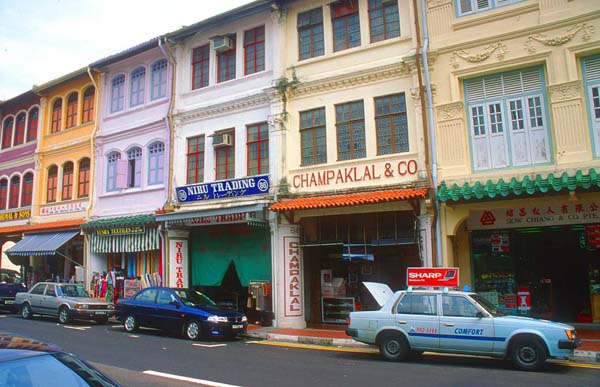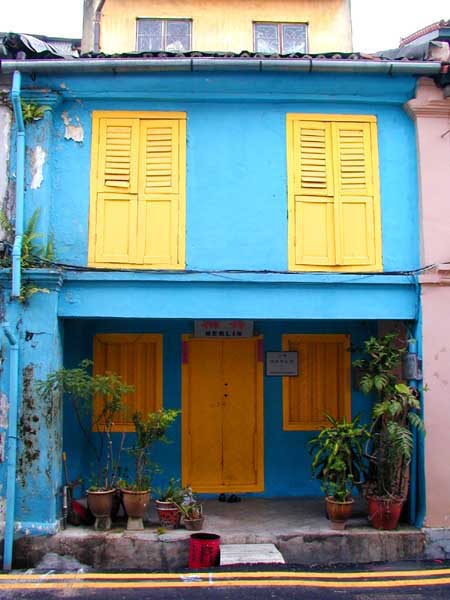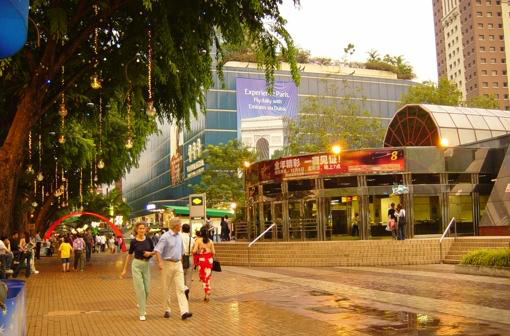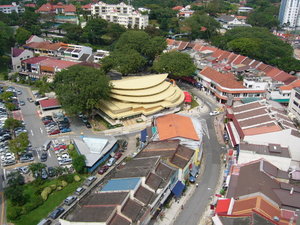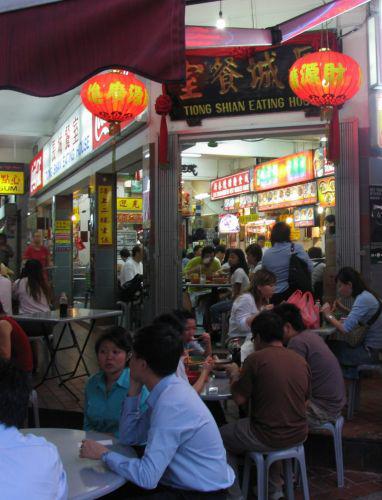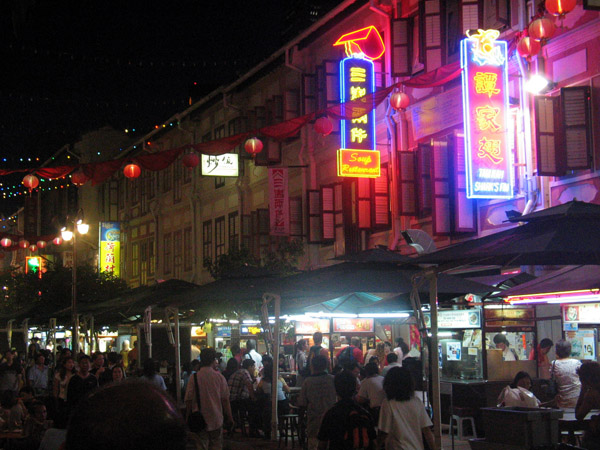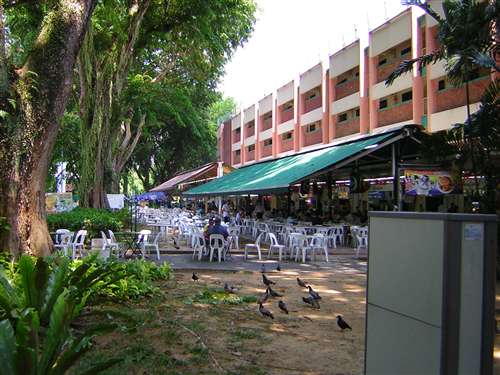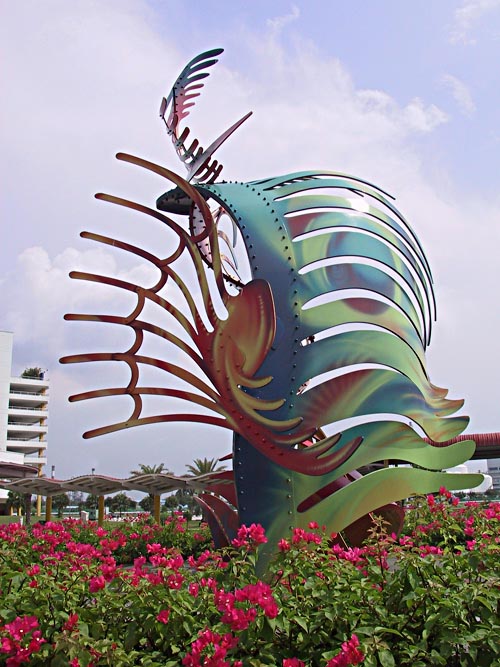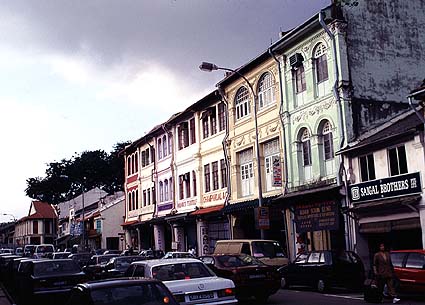This Webpage Title
Singapore - Attractions /Tourism/Tourist Accommodation

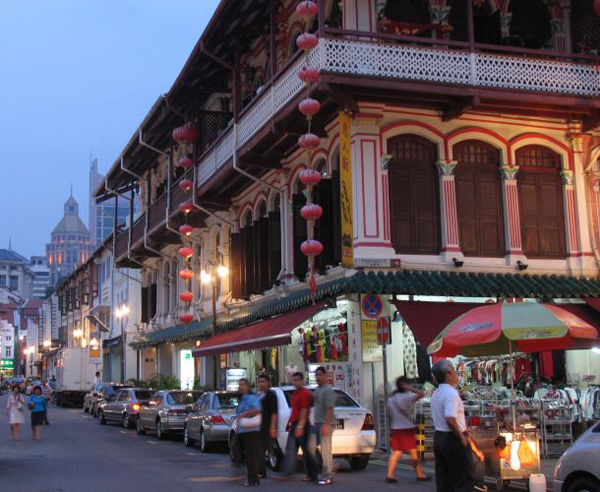
Singapore at the center of Asia has a lot of places worth visiting and a lot of people visited Singapore in 2006, whole 9.6 million and the numbers are growing each year.
Singapore Island measures approximately 42km east to west and 23km north to south at its widest points. (It takes about 20 minutes to drive from east to west, without traffic, which is roughly the same distance from Coffs to Woolgoolga).
Singapore is a very clean city, one of the cleanest in the world.
The Singaporean people enjoy a high standard of living and most live in high density government built apartments.
There are also about 100 first class hotels for overseas visitors to stay in and they are nearly always fully booked.
There are 33 million air travellers using the Changi Airport each year and at any one time, up to 114 aircraft can use the airport facilities. There are 3.6 million people from Australia who use the airport on the Australia - London route.
Changi Airport - terminal 3 - for the Airbus 380.
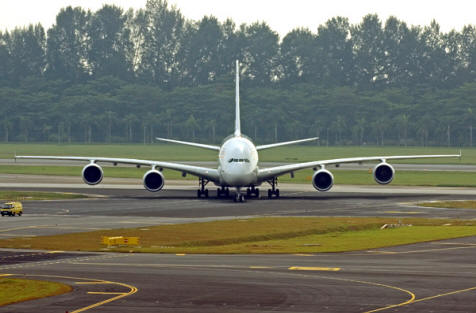
When it is opened in 2008, Terminal 3 will expand Singapore Changi Airport's annual capacity by 20 million passengers to 64 million.
The S$1.5bn ($882m) project features the new terminal building as well as a new baggage handling facility, an automated people mover connecting the three terminals and 28 new aerobridge gates, of which eight will be able to handle the next generation of large aircraft, the Airbus A380.
The new Terminal 3 building was designed by CPG Corporation and will have a gross floor area of 430,000m². Spread over seven levels (of which three will be underground) the terminal will house 28 boarding gates and increase car parking by 1,800 spaces.
There is 20,000m² of floor space in the terminal set aside for 70 retail and over 30 food and drink outlets. In May 2006, the topping out ceremony for Singapore Changi Airport's Terminal 3 was conducted to mark the completion of the main terminal building's structure and the beginning of its interior fit-out.
The country
Singapore is a very clean country and the city does not have any litter, as there are many fines in place if you are caught littering. Also chewing gum is banned in Singapore.
There are many places tourists can visit, the main ones are listed below.
Singapore River
The Singapore River was the lifetime of Singapore where our first immigrants eked out a meagre living and saw Singapore transform from an obscure little fishing village to a great seaport. Highlights on the banks of the Singapore River include Boat Quay and Clarke Quay.
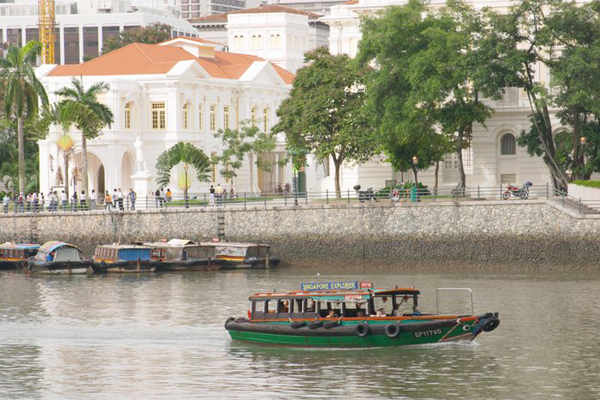
Arab Street
The Muslim centre of Singapore is a traditional textile district, full of batiks from Indonesia, silks, sarongs and shirts. Add to this mix rosaries, flower essences, hajj caps, songkok hats, basketware and rattan goods, and you have a fair idea of the products haggled over in this part of the city.
The grand Sultan Mosque is the biggest and liveliest mosque in Singapore, but the tiny Malabar Muslim Jama-ath Mosque is the most beautiful. There's fine Indian Muslim food along nearby North Bridge Rd and the foodstalls on Bussorah St are especially atmospheric at dusk during Ramadan.
A house in Arab Street.
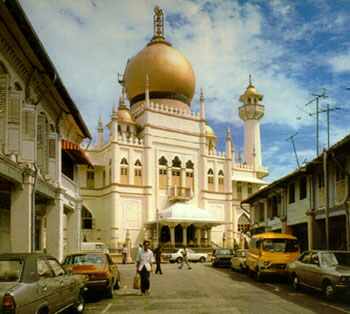
The grand Sultan Mosque
Orchard Road
For shopping, Orchard Road is the ideal place to spend a day there. The bustling shopping centres sells everything from the most fashionable and outrageous shoes and clothes to precious gems, eyewear and accessories. And when the shopping gets a little exhausting, revitalize yourself at one of the many restaurants and eating outlets.
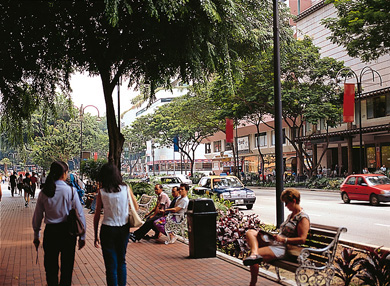
Holland Village
Holland Village is one of the favourite haunts of the expatriate community and Singapore's young and trendy. For food and entertainment, there is a mix of old coffee shops and ritzy wine bars; its colorful blend of foreign shops and local mixed trade as well as its many ethnic restaurants and fast-food outlets. Here you'll find an eclectic collection of goods from straw brooms to valuable antiques and movie memorabilia.
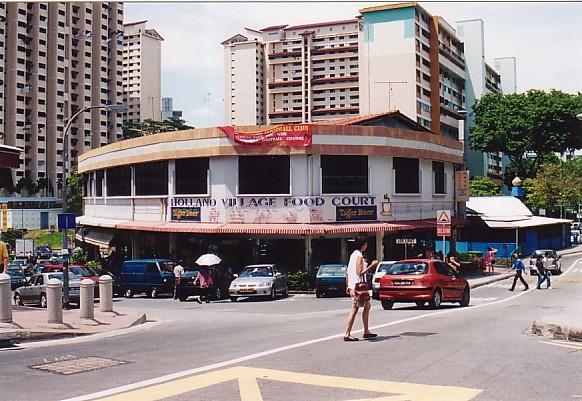
Chinatown
Experience the sights and sounds of Chinatown: medical halls mix snake skin, herbs and spices and other exotic ingredients into potions for all ailments; traditional delicacies like sea cucumbers lie drying in the street; fruit sellers squat near mounds of rambutan, strong-smelling durian, mangosteen and other seasonal fruits; fortune-tellers sit at make-shift tables waiting for eager customers to know their future; hawkers grill thin slices of pork for passers-by over home-made barbecues.
Shops and restaurants.
Outdoor eating.
Chinatown is a popular eating venue.
Changi Village
For a slightly different type of suburban shopping experience, Changi Village is the place to go for laid-back quiet surroundings. It offers a quaint charm of its own, away from the crowds and traffic for a more relaxed ambience for shopping. The food centre offers great variety of local food and round off the night by having a beer at Europa Changi.
Eating outside is part of the Changi Village atmosphere.
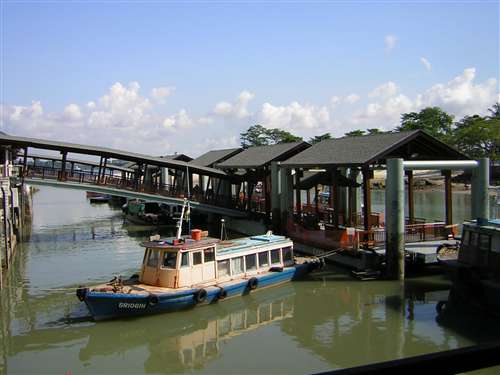
Jurong
Jurong Town, west of the city centre, is a huge industrial and housing area that is the powerhouse of Singapore's economy. This might seem an unlikely spot for a number of Singapore's tourist attractions but it is home to the Haw Par Villa (an incredibly tacky Chinese mythological theme park), the beautifully landscaped Jurong Bird Park, Chinese & Japanese Gardens and the hands-on Singapore Science Centre.
A monument to the wind in Jurong Town.
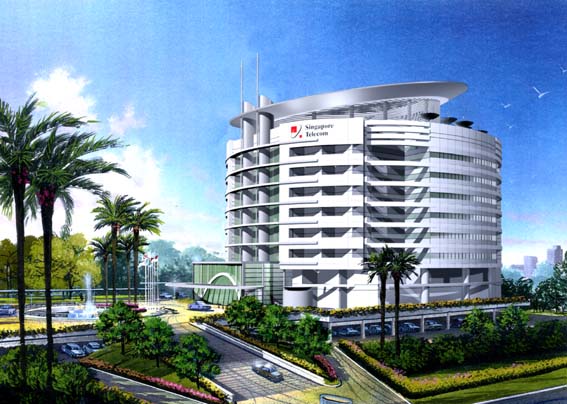
The new town hall.
Little India
This modest but colourful area of wall-to-wall shops, pungent aromas and Hindi film music is a relief from the prim modernity of many parts of the city. Centred around the southern end of Serangoon Rd, this is the place to come to pick up that framed print of a Hindu god you've always wanted, eat great vegetarian food and watch streetside cooks fry chapatis.
The Zhujiao Centre is the main market, but there are also interesting spice shops nearby. The best temples are Veerama Kali Ammam, Sri Srinivasa Perumal and the glitzy Temple of 1000 Lights.
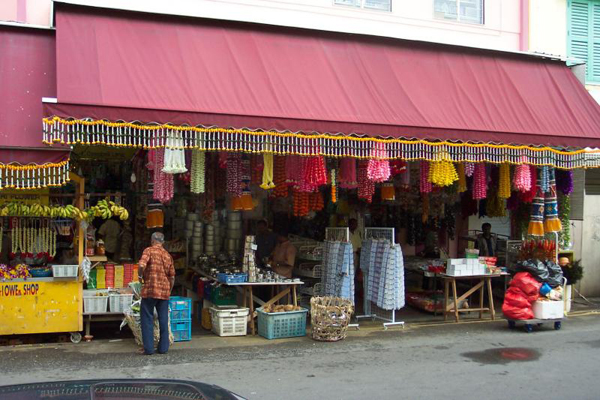
Shops in Little India.
Sentosa Island
Considered the granddaddy of Singapore's parks, Sentosa Island is the city-state's most visited attraction, especially on weekends. It has museums, aquariums, beaches (with imported sand), sporting facilities, walks, rides and food centres.
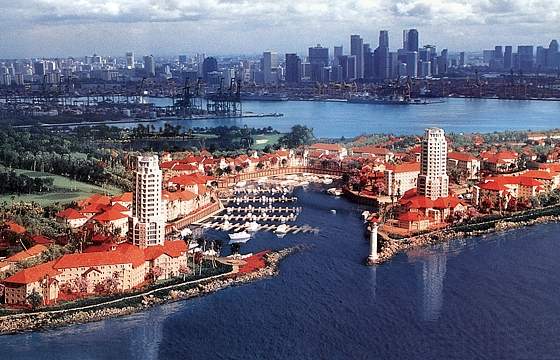
The new marina, with Singapore south and the P.S.A. in the background.
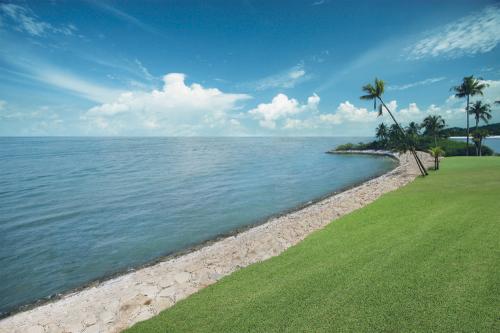
The beach and picnic areas.

The cable cars from the World Trade Centre to Sentosa Island.
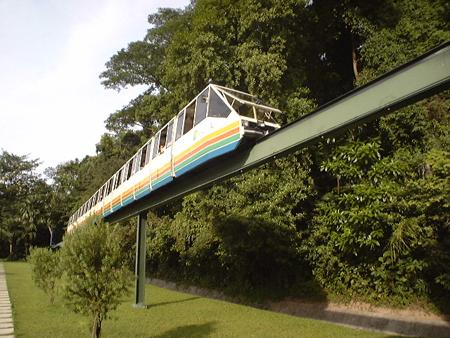
The Sentosa Island monorail.
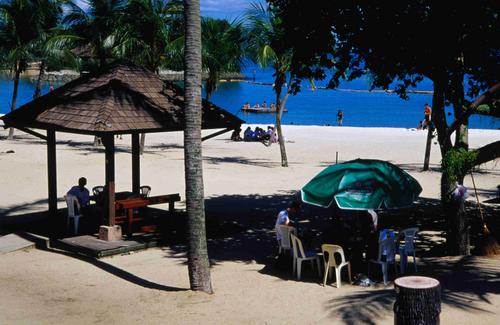
The beach.
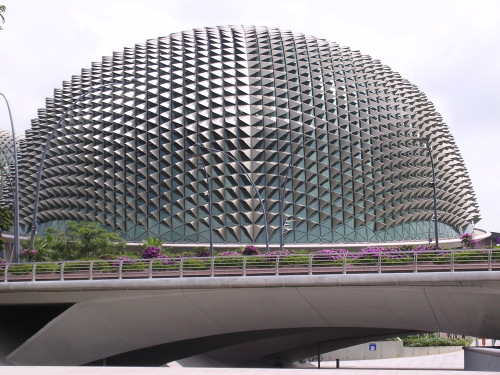
Singapore's cultural centre - The Durian, named after their favourite fruit - that tastes incredibly nice - but smells incredibly pungent (two weeks old dirty footy sox - left out in the sun and all wet)!

